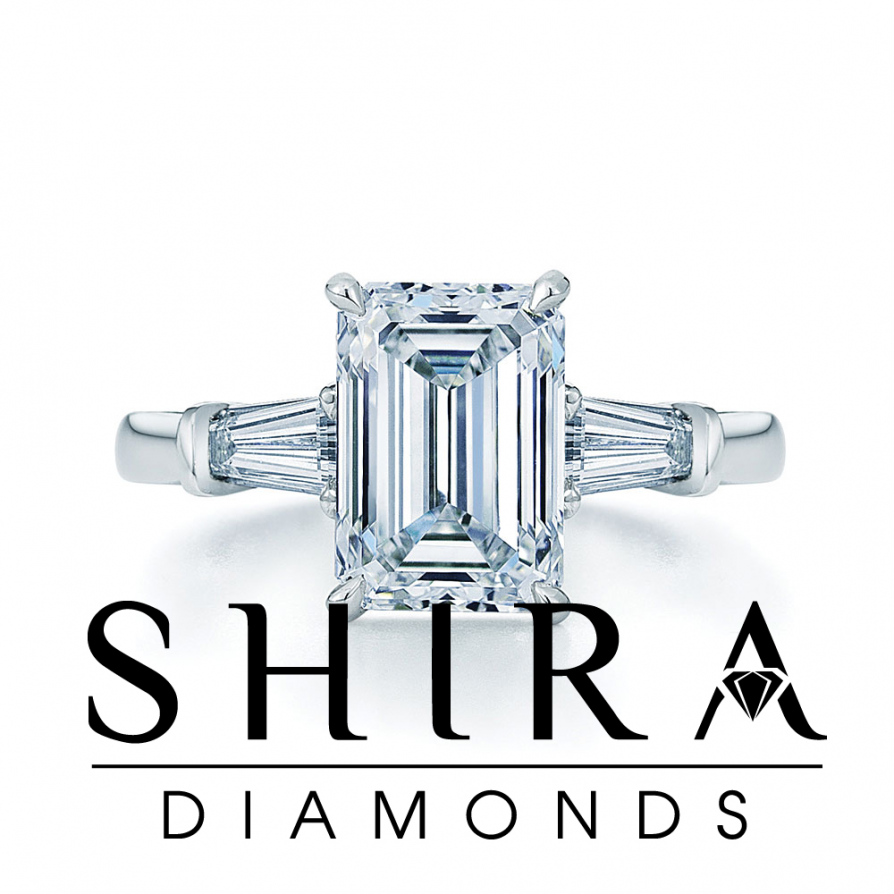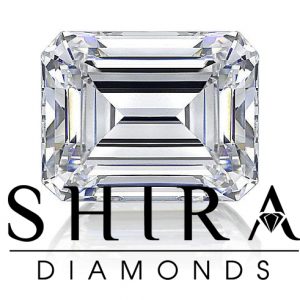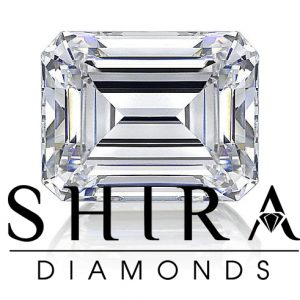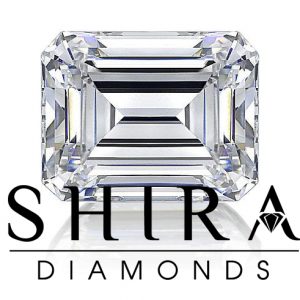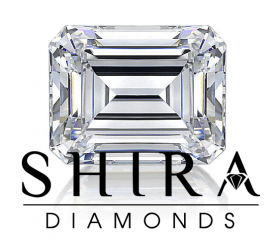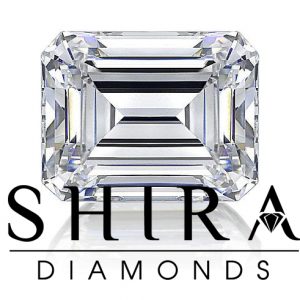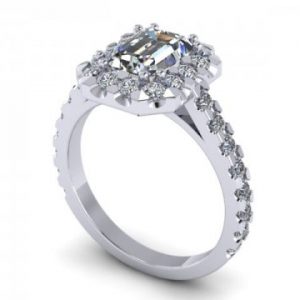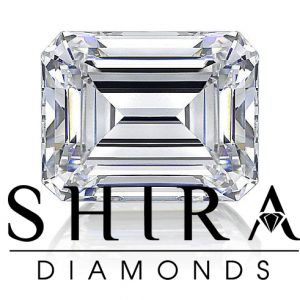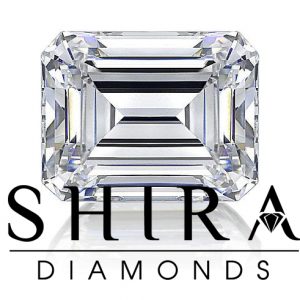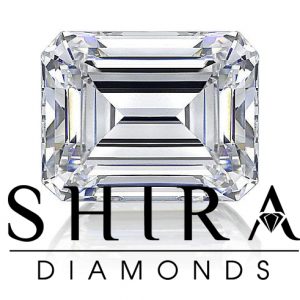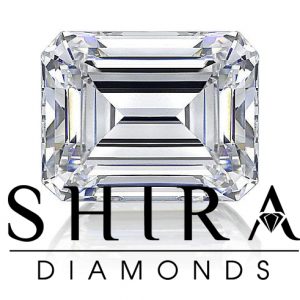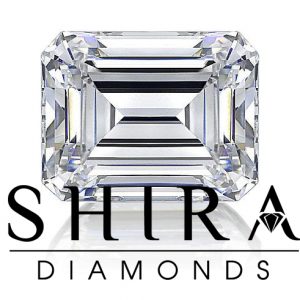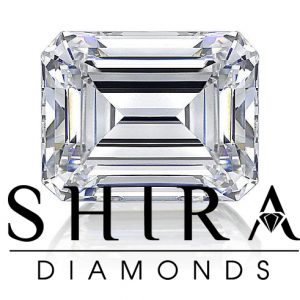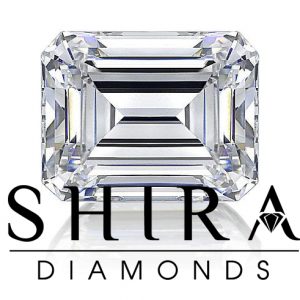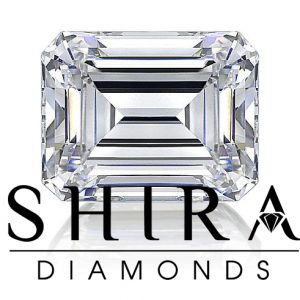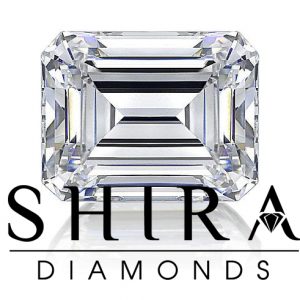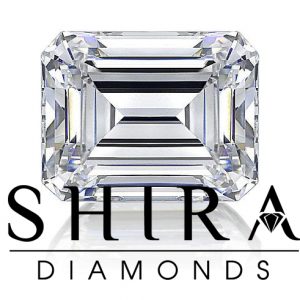Dallas Emerald Diamonds – Find Out How They Are Made!
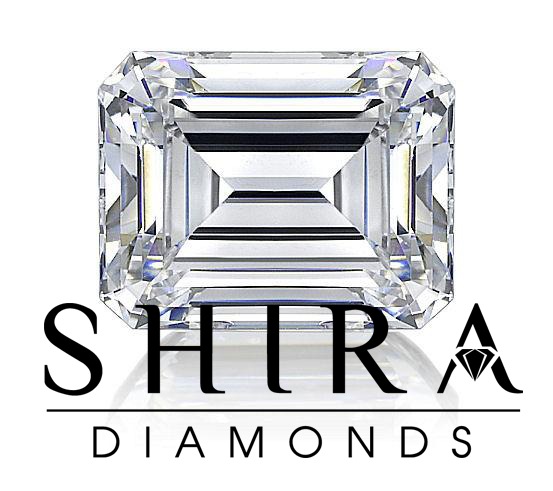
Back then, stonecutters could only manage this shape, and it was intended for emerald stones. It became a popular cut, helping to reduce the pressure during the stone’s cutting process and resulted in fewer chips in gems. Diamond cutters were attracted to this new shape, and also started to incorporate it when shaping diamonds.
However, the term “emerald cut” wasn’t used until during the 1920s when this cut saw a huge rise in popularity.
It was at this time that art deco designs — where symmetry and clean lines were admired — inspired a trend in emerald-cut diamonds. Since then, they have transcended time to become one of the most favored choices in engagement rings and other pieces of jewelry.
A Quick History on Emerald Cut Diamonds
While it’s easy to associate the emerald cut with the 1920s, the style has actually been first used during the later parts of the Middle Ages, at a time before diamonds were used in jewelry.
As mentioned above, diamond cutters wanted to improve on the design of diamonds, which only used a simple polishing process at the time. The diamond’s faces were polished to give a more even appearance to the facets, which led to fewer blemishes. Called the pointcut, this process lasted until the 14th century.
When the turn of the 15th century came, immense improvements to the pointcut were made; a substantial amount from the octahedron was kept, resulting in the even more popular table cut. Furthermore, at this point in time, people realized how important a culet (the flat face found at the bottom of a gemstone) was, which some table-cut diamonds had.
Not long after, the creation of four corner facets gave way to the process of the old single cut or the old eight cut. While these diamond cuts lacked fire and brilliance, they were used due to their hardness. However, a table-cut diamond appears to be black, which is why paintings from this era are depicted as such. This is also the reason why colored gemstones such as sapphires and rubies were a lot more popular during earlier times.
During the mid-1700s, the first brilliant cuts were developed and known as Mazarins, which was named after the collection of 18 diamonds that belonged to Cardinal Jules Mazarin. Then, in the 18th century, cushion cuts Dallas and fancy yellow Dallas became the popular choice, until the emerald cut was standardized during the 1940s. It was at this time that developments in diamond saws and other tools gave way to new cuts. Eventually, the step cut was replaced by the emerald cut when diamond cutters saw that it had more potential to give more fire to diamonds.
The Facets of Emerald Cut Diamonds
An emerald-cut diamond has approximately 57 to 58 facets, which consists of 25 crowns, 25 pavilions, and eight girdles. Because of the shape, angle, and size of the facets, an emerald cut diamond will show less dispersion compared to other diamond cuts, while providing a spectacular look.
Furthermore, the flat surface on top of an emerald-cut diamond gives off a truly stunning sparkle and shine. These distinctive features provide emerald-cut diamonds with their trademark staircase and “hall of mirrors” effect.
Get the Dallas Emerald Diamonds You Deserve at Shira Diamonds.
Shira Diamonds Dallas is the leading authority in manufacturing and importing loose diamonds in Dallas, TX. You can be sure to enjoy our vast collection of loose diamonds which are certified by GIA and EGL.
We don’t just help to save you money on your next diamond purchase, but we also connect you directly with the product you’ve always wanted — without the need for diamond brokers and jewelry stores.
You can also trust that every piece we sell comes at wholesale prices, which means that you’ll have the best closed and private loose wholesale diamond purchasing experience.
We also offer an extensive selection of diamond cuts, such as:
We also offer other services such as custom diamond ring designs, diamond studs, and more, while providing our customers with an unparalleled buying experience.
For all your diamond and other jewelry needs, you can be sure that Shira Diamonds is here to deliver your expectations. We’re located in Dallas, Texas, between Frankford and Preston, so give us a call today to view our collection of loose wholesale diamonds.
Our team is proud to offer custom designer engagement rings to all customers who wish to have the best ring when they pop the question.
Our custom rings are created by placing beautiful loose stones in our designer settings. At the same time, our certified geologists can help you understand the intricacies involved in selecting and eventually purchasing the highest quality stone.
Whether you’re shopping along with your fiancée, or you already have your eyes set on a gorgeous type of engagement ring, you can be confident in knowing that we’re here to help you find “the one.”
Enjoy browsing through our inventory, or message one of our knowledgeable and friendly staff to get answers to your questions or to provide you with guidance when you need it. If you prefer a more personal touch, our Dallas showroom provides a welcoming and relaxed atmosphere, and it is ready to serve all our customers.
Who We Are
As your online diamond wholesaler, Shira Diamonds can save you money on overhead costs that will otherwise be pocketed by retailers, diamond brokers, and those who claim to be wholesalers. Through us, you can save on more money by connecting you directly to fine diamonds of the highest quality. With more than 20 years of experience behind us, there’s no better place to purchase Dallas Wholesale Diamonds.
We have been providing retail jewelry stores with loose diamonds since 1999, so we’re the ones everybody goes to when it comes to competitive wholesale diamond pricing. We’re not just affordable — we also provide the same service that you can expect from a fine jewelry retailer. You never have to pay retail when it comes to diamonds again; head straight to Shira Diamonds in Dallas, Texas, for all your diamond needs.
Are Emerald Cut Diamonds More Expensive?
Like many other diamond shapes, emerald cuts are great at consuming a lot of a rough diamond’s total carat weight.
This cut requires less manufacturing during the cutting process and doesn’t waste as much of the precious raw material compared to round cuts. However, there is one trade-off — because of the depth of the stone, they can hide carat weight, which is why they’re cheaper compared to round cut diamonds.
While emerald cuts may be cheaper compared to round cuts (as well as other cuts), you’ll need to be much more meticulous when choosing your emerald cut diamond. Because of its glassy appearance, an emerald-cut diamond won’t hide as many inclusions as good as other cuts do. Shoppers will normally find diamonds of an SI1 or SI2 clarity grade to be sufficient when choosing diamonds.
However, if you’re looking for an emerald cut diamond, it’s best to choose those which are a VS2 or even VS1 clarity grade. In an ordinary SI1 clarity diamond, it will appear to be clean to the eyes.
Unfortunately, because of the glassy nature and large table of emerald-cut diamonds, the inclusion of an SI1 clarity diamond will have inclusions visible to the naked eye. This doesn’t mean that an emerald cut is a poor choice; it simply needs an upgrade, which you can get at a good deal.
Price Considerations for Emerald Cut Diamonds
When you’re looking for the best emerald-cut diamond, there are a few things to consider. The first of these is investing in higher clarity.
Brilliant cut diamonds will often allow light to bounce around its facets, successfully masking any inclusions. As mentioned above, emerald cuts don’t have many facets, and as a result, the inclusions will show.
When purchasing an emerald cut diamond, consider one with high clarity, with inclusions that are closer to the diamond’s girdle, or those that are off-center. While a higher clarity grade may cost more, this can be offset by choosing a slightly lower color grade.
Another factor to consider is the length-to-width ratio, which is particularly important when choosing emerald-cut diamonds. Because emerald cuts can come in a square or rectangular shape, they can either be short or long. Keep in mind that the optimal cut ratio for a square shape is between 1.00 to 1.05.
However, there’s no optimal ratio for the rectangular shape since it is up to your preferences, but the typical ratios are around 1.35, 1.50, and 1.75. Furthermore, the ratio is determined by dividing the length by the width. Before looking for loose diamonds, be sure to know what you’re looking for — a gemologist will be able to help you narrow down your choices to find the ideal length to width ratio for your preferred shape.
Is an Emerald Cut Diamond Good?
This question can be answered depending on what you’re looking for in your engagement ring. As mentioned, emerald-cut diamonds don’t sparkle in the same way as a brilliant-cut diamond would. They do, however, offer beautiful flashes of light, and as mentioned above, they have the capability of showcasing a diamond’s clarity in stunning ways. This also works in reverse, and their visible inclusions can be made more obvious should you choose an emerald cut.
Interestingly, while it was developed for emeralds, the emerald cut is now even more commonly applied to diamonds. Today, emeralds will often be found presented in “halo” style settings, along with a border of diamonds, or as round cabochons. Still, here is a wide range of reasons why you should consider getting an emerald cut diamond:
A Unique Design
It could be said that the design of an emerald-cut diamond was made for women who want something that’s not just different, but also more understated. This cut isn’t as flashy or showy as the other kinds of cuts which may sparkle — only when you get closer, will you see just how classy this cut is.
Beautiful, Smooth Surfaces
While other diamond cuts might have various cuts and angles, the emerald cut has a large table and several angles cuts that form steps from the table. These “steps” provide a smoother surface for the diamond to allow for the color and clarity of the stone to truly show.
Not Just a Trend
The emerald cut has been used for hundreds of years, so it’s not just a trend, unlike other cuts. For instance, the time will come when the heart-cut diamonds won’t be a style that every woman wants to wear. The emerald cut is timeless, and it will always be an elegant choice.
Provides Vivid Flashes
The emerald cut may not have the flashy brilliance or stunning fire of a round-cut, but when caught in the right angle, the vivid flashes of an emerald cut will take your breath away. As mentioned, it’s more of a cut that works well the closer you look at it.
Works Well with Surrounding Stones
Because of the flat sides of an emerald-cut diamond, it looks gorgeous with other stones set beside it. One such example of its flexibility with other stones can be showcased by having tapered baguettes next to an emerald-cut diamond.
More Affordable
Because this cut isn’t as popular as other cuts, you’ll be able to purchase a diamond with a bigger carat and better quality emerald cuts. This means that you’ll get more value for your money, which is a huge plus when looking for the perfect diamond.
Appears Larger
Because of its large steps and an elongated table (if you choose a rectangular shape) an emerald cut diamond will look bigger. This also gives off the illusion of having a larger diamond — one carat of an emerald cut diamond will look bigger than that of a pear or round cut.
Tapered Edges
An emerald-cut diamond has tapered edges, so you don’t need to worry about sticking to a certain setting. You also won’t have to worry about bumping or catching the corners or edges of furniture in your home.
Looks Beautiful on Slim Fingers
The different kinds of diamond cuts work well on different finger shapes and sizes. Choosing an emerald-cut diamond is flattering on slender and long fingers, which isn’t always true for other styles of diamonds.




